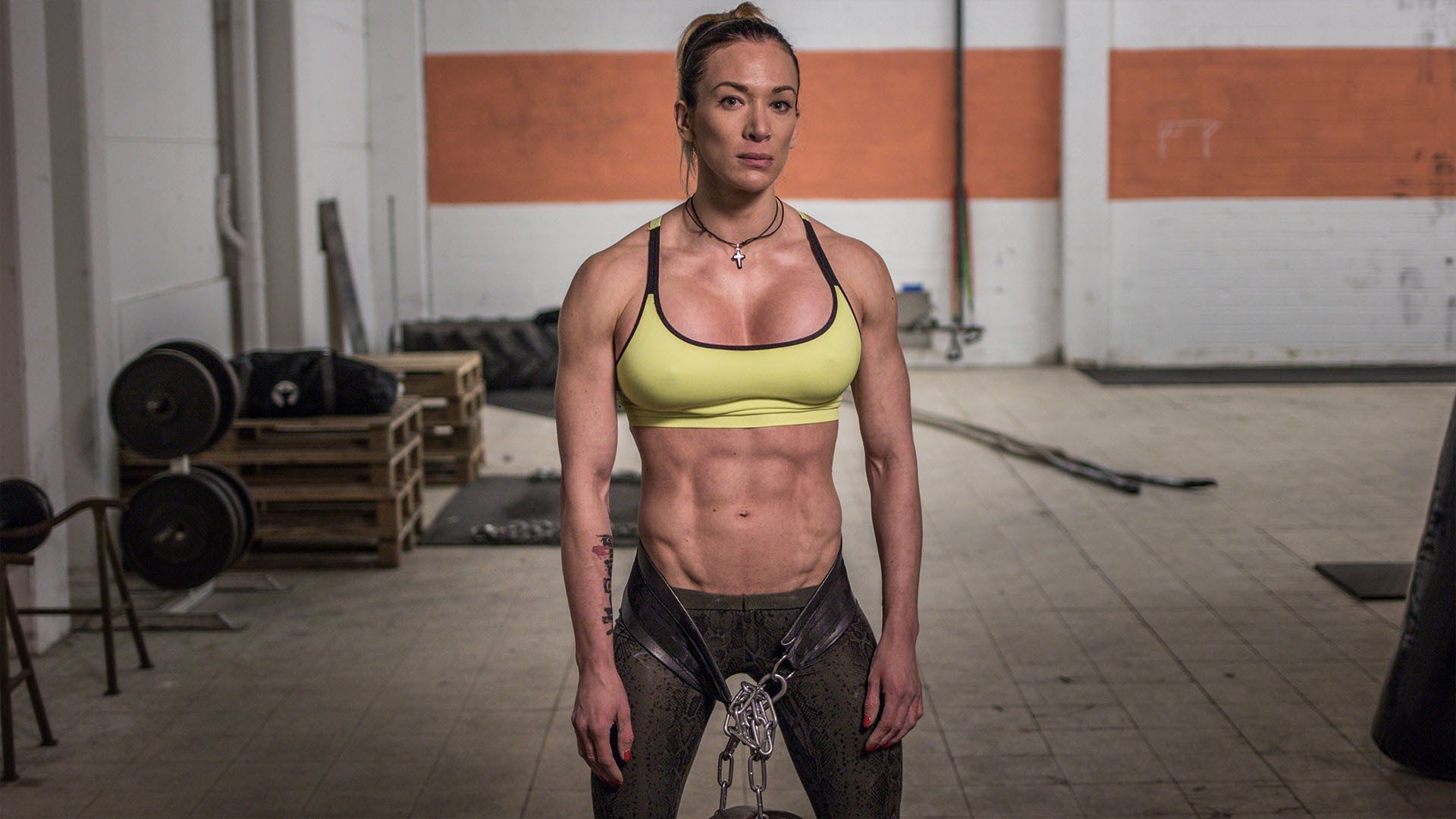Calisthenics: Everything You Need to Know About the Beginner-Friendly Kit-Free Workout
Calisthenics: If you weren’t alive when the ancient Greeks were, aka 326 BC, we’ll forgive you for not being familiar with this particular training method. Characterised by only working with your bodyweight this training style is popular with gymnasts and those who want to get strong on their own terms and schedule.
Following the basic planes of human movement such as pulling and pushing motions, calisthenics has been championed by those who love to increase strength and build muscle without ever needing to be tied down to a location or equipment. Which, considering we’re all in semi-lockdown makes calisthenics the ideal workout to try at home.
The benefits of calisthenics
So, the ancient Greeks loved to exercise in this way, but what are some of the concrete benefits that’s made it such a sustained method of working out?
1. Flexibility of routine
‘Calisthenics can be done anywhere – the park, your office or the bus stop!’ Ha says, and also ‘at home’ which is pretty crucial to us all being able to keep working out right now.
Basically, no equipment = you set the time, the place and the schedule.
2. Strength and mobility gains
Unlike with other forms of exercise, ‘calisthenics can improve your strength, mobility and flexibility,’ says trainer Ha. Because you’re only using your own body weight, you can easily up the load you’re putting your muscles under with increased reps, longer sessions or less rest time to build strength.
3. Endurance
Because of the circuit-style way most calisthenics workouts are structured – with minimal rest between exercises, you’ll increase the amount of stress and load your muscles are able to perform.Here Are A Few Exercise Myths To Be Aware Ofby VeuerPrevious VideoPlayNext VideoUnmuteCurrent Time 0:03/Duration 1:10Loaded: 53.81%FullscreenCLICK TO UNMUTE
Try this beginner calisthenics workout
According to David Jackson, coach at the School of Calisthenics in London, calisthenics is a beginner-friendly discipline because it doesn’t call for any equipment than your body weight, it’s perfectly suited to novices.
Do: 2 – 4 rounds with minimal rest between exercises and 3 minutes rest in between each round. Try not to rush: Focus on correct form and movement control.
Squats
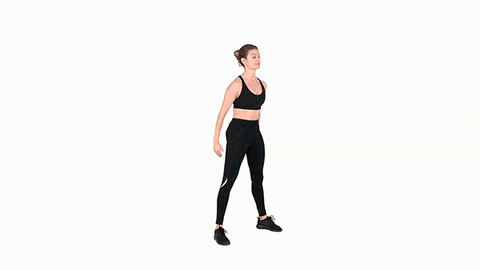
Do: 12 reps
a) Standing with your feet hip-width apart, slightly hinge at the hips to lower down into a squat position, making sure your knees track in line with your toes – not over!
b) Push through the heels of your feet to come up to standing, squeezing your bum at the top of the move. Repeat.
Push ups
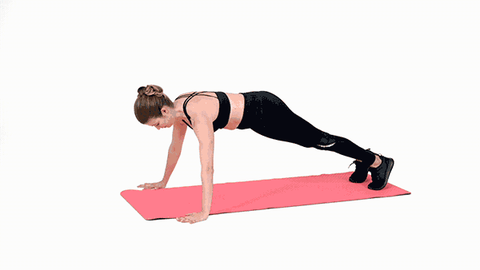
Do: 8 reps
a) Either on your toes or on your knees, place your hands just wider than shoulder width apart.
b) Lower your body to the floor trying to keep your elbows from flaring out.
c) Push back up and repeat.
Plank
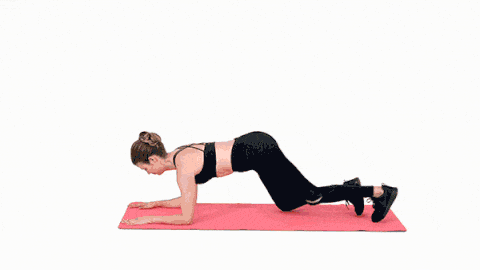
Do: 30 seconds
a) Come down to your mat and place your hands on the floor in front of you, slightly wider than shoulder width apart.
b) Come up to plank position by stepping back one foot at a time – squeeze your core, glutes and thighs to hold yourself in position for 30 seconds.
If you need to take a break, come down onto your knees until you feel ready to push back up to full plank. Or, you can perform the move on your knees – just make sure to still focus on muscle engagement.
Forward lunges
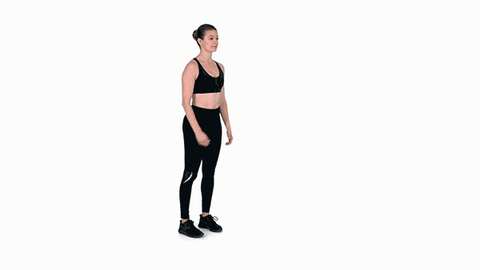
Do: 8 on each leg
a) From standing, step forward with your left leg, bending at the knee. Bend your back knee to gently scrape the ground.
b) Push through your heels to come back to standing and repeat on the other leg.
Burpees
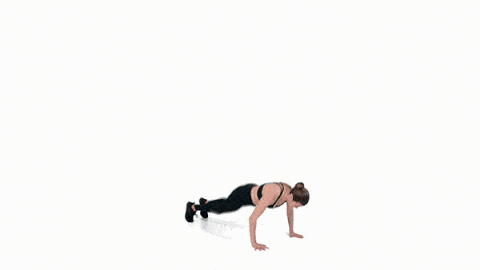
Do: 8 reps
a) From standing, roll down to the ground until your hands touch the floor.
b) Jump or step your feet back into a plank position and lower down until your chest and thighs touch the ground.
c) Push back up to a plank position and jump your feet back towards your hands.
d) Explosively jump straight up, raising your arms above your head as you do. Land softly and repeat.
Make it easier by removing the lower-down section. Simply jump back to a plank and jump your hands back up to your hands instead.
Side plank
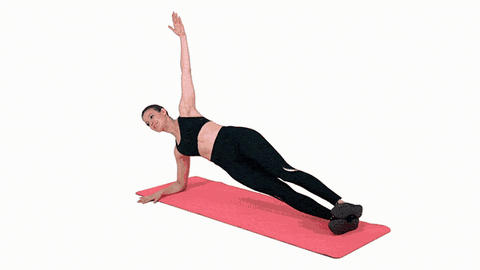
Do: 15 seconds on each side
a) On your mat, come to rest on your side with your feet together and one arm bent at the forearm, palm down and directly under your shoulder.
b) Use your core to raise your hips towards the ceiling until the only points touching the floor are your arm and feet.
c) Hold for 15 seconds then repeat on the other side.
Tuck jumps
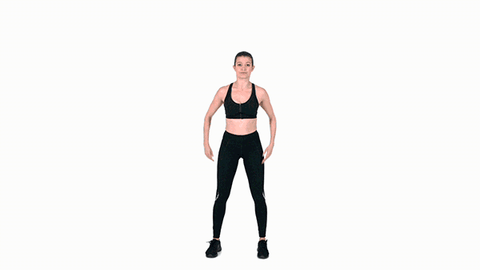
Do: 8 reps
a) From a standing position, bend slightly at the knees to prepare your body for jumping.
b) Explosively jump up, tucking your knees into your chest as far as you’re able to go.
c) Land softly with slightly bent knees and repeat.
Answering your calisthenics FAQs
Can beginners do calisthenics?
Absolutely. The fact that there’s no kit necessary to work out this way makes the training style accessible in terms of location and budget while the movements can be scaled to any ability, including true beginners.
‘Using basic human movements, like pushing, pulling and squatting in the correct way and for the correct amounts of repetition and intensity, can help you to build strength and feel better,’ says Daniel Zivatovic, calisthenics trainer at London movement studio, Blok.
But, how can beginners get started?
‘Focus on simple exercises such as push ups and jump squats‘, says Gymbox calisthenics PT, Rhys Morgan. ‘As you get stronger and more competent with the movements, you can build up to more complex moves such as leg raises and pull ups,’ he advises.
So, refrain from putting the horse before the cart and properly progress up to those moves that look absolute fire on your Instagram.
Can you build muscle with calisthenics?
According to Morgan, building muscle this way is actually a far more balanced way to go about it:
‘People generally build muscle more evenly across their bodies with calisthenics training,’ says Morgan. ‘It’s because you’re not training muscle groups in isolation, you’re actually training multiple muscle groups across your body by focusing on movement patterns such as push or pull movements.
Hmm. Okay, so bodyweight training can help to keep you looking and feeling muscularly balanced – that we like. But what if you like to mix it up and do some weighted and some non-weighted workouts?
Well, the way you can do that is by keeping your weekly routine nice and varied.
If you like to exercise four times a week, why not make two of them calisthenics sessions and the other two things you enjoy such as spinning, pilates or weight training. As we’re spending more time at home right now, and are limited to how much we can go outside, perhaps one day you could go for a solo run and another day you could try skipping?
There’s no perfect routine, the key to making it stick is making it enjoyable so don’t feel beholden to one type of fitness, mix it up whenever you feel!
Can you do calisthenics every day?
Technically, yes. And espcially during this Covid-19 outbreak it’s no bad thing to up your workouts (as long as they’re nice and varied) as it’s unlikely we’ll be able to hit our 10,000 steps on the daily. But, when life goes back to normal should you do calistenics every day? Well that’s a question that’s up for debate.
Zivatovic suggests that training everyday really isn’t the way to look after your bod properly – and you know we’re all about that at WH.
‘If you’re a beginner, then doing three full body workouts per week is enough and gives your body time to rest and recover in between. Working out correctly (and not overdoing it!) is important to minimise the possibility of injury,’ says Zivatovic.
‘You only get better, stronger and progress when the body is able to adapt from your training,’ agrees coach Jackson. ‘If you don’t ever rest, you’re not allowing your body the chance to recover and, in turn, adapt.’ And, remember, there’s no one plan fits all when it comes to training: ‘You need to find out what works for you and your lifestyle’ he says.
So while you could power on and work out every single day, it’s probably not conducive to actually hitting your goals of creating a sustainable fitness routine or changing your body composition – that comes down to finding true balance between rest, exertion and nutrition. Facts!
What should you wear for a calisthenics workout?
Because of the nature of the exercises, you’re probably going to get a tad sweaty. Can we suggest some light workout leggings that are breathable enough to keep you cool and supportive enough that you maintain some modesty whilst squatting your heart out?
